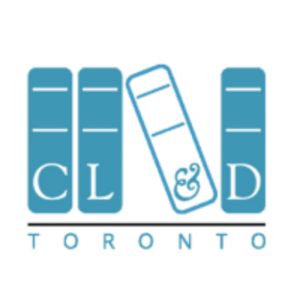Over 100 residents and community members gathered at a locally organized media event this morning at 40 Oak Street and spoke their minds about the Revitalization.
Monday, April 2, 2012
History
Regent Park is one of Canada’s oldest and largest public housing developments, housing approximately 7,500 residents in 2,083 rent-geared-to-income (RGI) units. Built between the late 1940’s and 50’s, Regent Park was designed under the “Garden City” model, physically turned away from the aggravation and stress of city-life, with many walkways and park spaces built instead of streets. Turned away was exactly what Regent Park had accomplished. With 40% of its residents on social assistance and 65% being new immigrants, the neighbourhood faced many barriers and was physically, socially and economically cut-off from the rest of the city. Moreover, with most of the buildings having gone 50+ years without proper maintenance or upgrades, living in Regent Park became almost unbearable.
In 2003, a 15-year plan to revitalize Regent Park into a mixed-income community was set into motion. This meant that the existing 2,083 RGI units would be demolished and replaced with new units to provide better quality housing for residents. 3000 new condominium units would be sold to help pay for the Revitalization. Regent Park would be turned into a mixed-income community, as studies have suggested that integration of different income-groups in one neighbourhood has the ability to facilitate upward-mobility of low-income residents through diverse social networks, economic opportunities and motivation from a healthy neighbourhood (Brophy and Smith, 1997). It also meant that amenities and services that have never been offered to the community before, such as an aquatic centre, adult learning centre, arts and cultural centre, and the community’s first bank, would be built as a part of the redevelopment.
The concept and application of mixed-income housing is still relatively new in North America, and of course, with every new idea comes a few skeptics. So on Monday, April 2nd 2012, Regent Park residents and community members united to address them.
Residents unite
Over 100 residents and community members gathered at a locally-organized media event this morning at 40 Oak Street and spoke their minds about the Revitalization.
Long-time resident, Ms. Betty Wyse, was among the first of the residents to be interviewed by our Social Media Coordinator, Suzan Batayeh. Having lived in Regent Park for 41 years, Ms. Wyse was excited for the changes being brought to her community. Not surprisingly, she expressed her sense of isolation when she first moved into Regent Park. “Back then, I lived in the Park but I didn’t know anything…because everything was so isolated,” says Wyse. “Now I feel a sense of community. I know what’s going on in the Park through organizations that weren’t here before.”
Similarly, local youth Amzad Khan noticed the difference in the sense of inclusiveness over the past few years. Khan, who now volunteers regularly in the community, states, “There’s so much more happening, not just the structural changes. (There’s) new opportunities, new people, new ideas. There is economic growth and the social landscape is changing for the better.” Khan also expressed his admiration for the way the Revitalization has begun to alleviate social stigma and economic exclusion historically experienced by the community. Indeed, the Revitalization has provided over 450 residents with jobs so far.
One of the objectives of the Revitalization is to not only provide the community with a new physical infrastructure, but a healthy social infrastructure as well. The Revitalization has already brought a new employment centre, children and youth hub, and adult learning centre to the community. It will soon finish building a new central park, aquatic centre, arts and cultural centre, and community centre by the end of Phase 2 of the redevelopment (out of 6 phases).
New Regent Park resident and condo-owner, Kate Sellar, spoke out this morning about how she looks forward to the day that her son will play in the same park, school, aquatic centre with other children who come from various income-levels and ethnic backgrounds in the community. There will no doubt be differences among neighbours, but differences do not connote divide. With amenities and services offered to all residents, and condominium and RGI units built at the same quality, it is difficult for residents to see division.
Diane MacLean, a resident since 1986, also spoke up at today’s event. Having lived in Regent Park for close to 30 years, she too spoke about her experiences of living in a socially- and economically-isolated neighbourhood, which for a long time was “segregated from the rest of the City”. The Revitalization will allow Regent Park to function more as a “typical neighbourhood”, noting that regular, healthy neighbourhoods, should not be occupied solely by low-income households, and should have access to basic amenities like a grocery store and bank, both of which were introduced to the community for the first time in Phase 1 of the Revitalization.
Executive Director of the Toronto Christian Resource Centre, Debra Dineen, closed the event by stating that the “Regent Park Revitalization sets a model across our city, province and country”. The redevelopment will “by no means (be) perfect”, but the community is seeing many positive changes and “we deserve it”.
Written by Alison Chan (alison@tccld.org)
Photos and interviews conducted by Suzan Batayeh (suzan@tccld.org)

